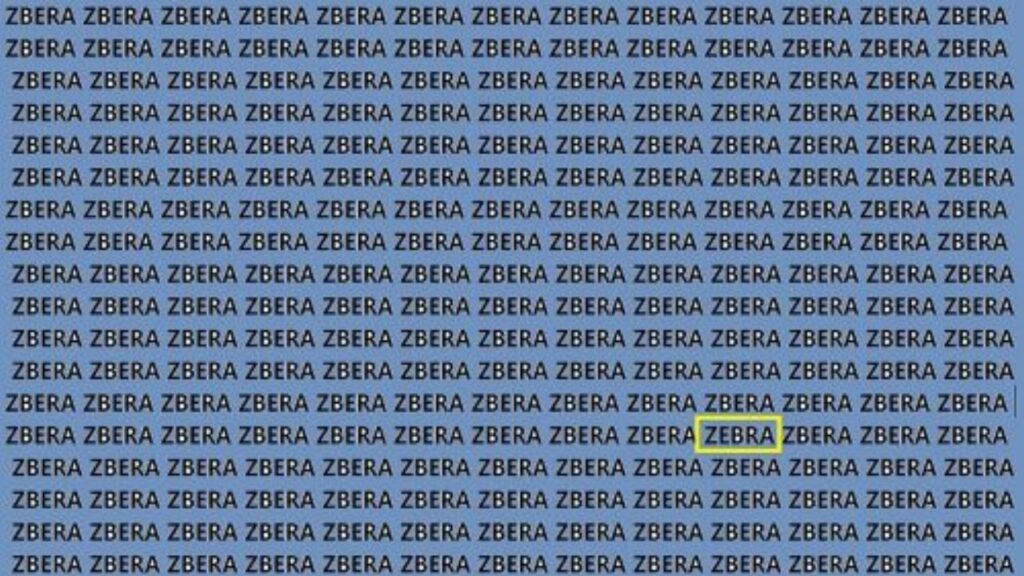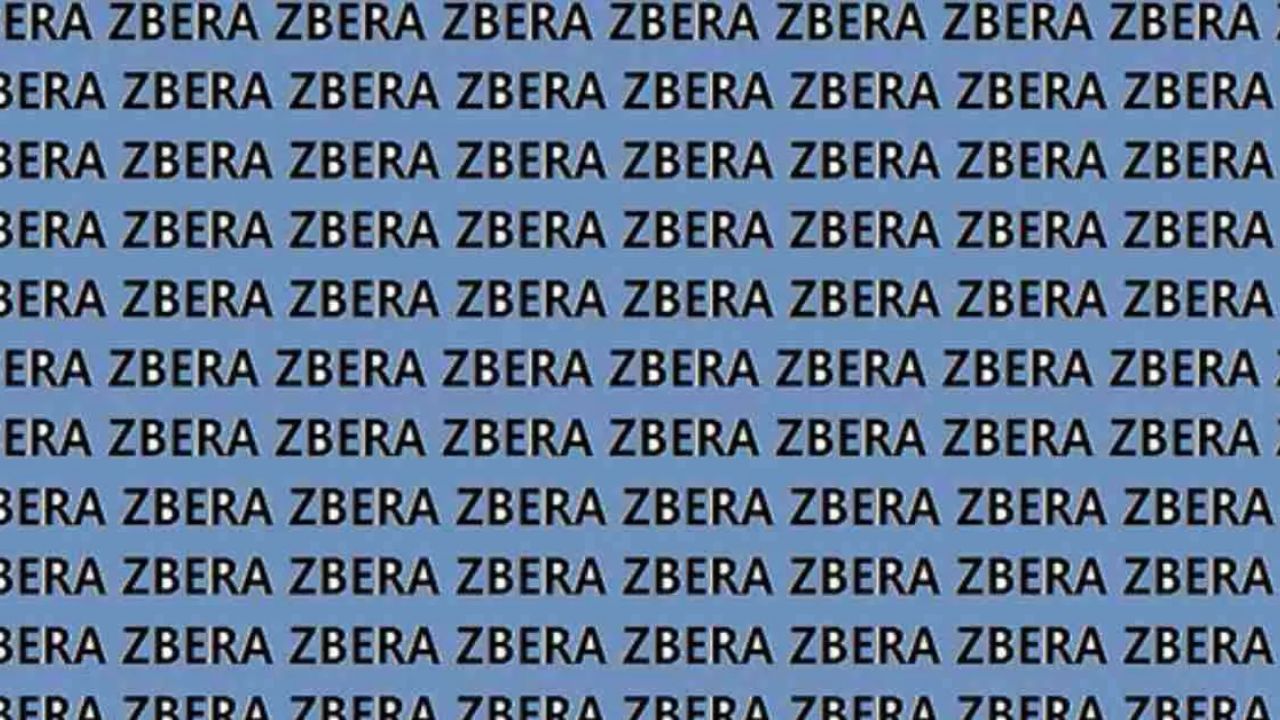The Fascinating World of Word-Based Optical Illusions

Word optical illusions represent a unique category of visual puzzles that combine reading comprehension with sharp observation skills. These challenges test your ability to spot subtle differences among seemingly identical text patterns.
Unlike traditional picture-based illusions, word puzzles require your brain to process linguistic information while maintaining visual awareness. This dual processing creates an engaging mental workout that exercises multiple cognitive functions simultaneously.
How Your Brain Processes Written Text
Reading involves complex neural pathways that automatically recognize letter patterns and convert them into meaningful words. This process happens so quickly that most people never think about the mechanics involved.
When faced with repetitive text patterns, your brain tends to fill in gaps and make assumptions. This automatic processing can sometimes work against you in word-based optical illusions.
The Challenge of Pattern Recognition
Human brains excel at recognizing patterns, which helps us read quickly and efficiently in daily life. However, this same ability can make it difficult to spot small variations in repetitive text arrangements.
Word optical illusions exploit this natural tendency by presenting grids or lists of nearly identical words. The challenge lies in breaking free from automatic pattern recognition to examine each word individually.
Understanding Different Types of Word Illusions
Visual word puzzles come in various formats, each presenting unique challenges for your observation skills. Some focus on spelling variations, while others test your ability to distinguish between similar-looking words.
The most common type involves finding a single different word hidden among dozens of identical ones. These puzzles require sustained attention and systematic searching techniques to solve successfully.
Spelling Variation Challenges
These puzzles present words that differ by only one or two letters, making the variations extremely subtle. Your eyes must examine each letter carefully to identify the hidden differences.
Common variations include swapping similar-looking letters like ‘b’ and ‘d’, or substituting vowels that appear nearly identical. These minute changes can be surprisingly difficult to detect quickly.
Font and Typography Tricks
Some word illusions use different fonts or typography styles to create visual confusion while maintaining the same basic word. These challenges test your ability to focus on content rather than presentation.
Typography-based puzzles might use bold, italic, or slightly different font sizes to camouflage the target word. Your brain must learn to ignore these visual distractions and focus on the actual letters.
Cognitive Skills Required for Success
Solving word optical illusions requires a combination of reading ability, visual processing, and sustained attention. These skills work together to help you identify subtle differences that others might miss.
People with strong reading backgrounds often perform better on these challenges because they’re accustomed to examining text carefully. However, fast readers sometimes struggle because they’re used to scanning rather than scrutinizing individual words.
Attention to Detail
Successful puzzle solvers develop the ability to examine each word methodically without losing focus. This skill requires conscious effort to override your brain’s natural tendency to skim familiar text.
Training your attention to detail involves slowing down your normal reading pace and examining each letter individually. This methodical approach increases your chances of spotting subtle variations quickly.
Visual Discrimination Abilities
Visual discrimination involves recognizing subtle differences between similar objects or symbols. This skill is essential for identifying variations in letter shapes, spacing, or word structure.
People who work in fields requiring precise visual analysis often excel at these challenges. Proofreaders, graphic designers, and quality control specialists typically possess well-developed visual discrimination abilities.
Effective Strategies for Word Puzzle Success
Developing systematic approaches significantly improves your performance on word-based optical illusions. Random searching rarely produces consistent results, especially under time pressure.
The key lies in training your eyes to work efficiently while maintaining thorough coverage of the entire puzzle area. Professional puzzle solvers use specific techniques that can be learned and applied consistently.
The Grid Method for Word Searches
Divide the word grid into smaller sections and examine each area completely before moving to the next. This methodical approach ensures you don’t accidentally skip over the target word.
Start from the top-left corner and work systematically across each row before advancing to the next line. This organized pattern prevents your eyes from jumping around randomly and missing important details.
Letter-by-Letter Comparison Technique
When words appear very similar, examine each letter position individually rather than trying to read the entire word. This detailed approach helps identify subtle spelling variations that might otherwise go unnoticed.
Focus on commonly confused letter pairs like ‘b’ and ‘p’, or ‘n’ and ‘h’ that can easily be overlooked. These small differences often hold the key to solving challenging word illusions.
The Science Behind Reading and Visual Processing
Reading involves multiple brain regions working together to decode written symbols and extract meaning. This complex process happens automatically for skilled readers but can be disrupted by optical illusion techniques.
Research shows that experienced readers rely heavily on context and pattern recognition to process text quickly. Word illusions challenge these automatic processes by removing helpful context clues.
Eye Movement Patterns During Reading
Normal reading involves rapid eye movements called saccades that jump from word to word across text. These movements are optimized for comprehension rather than detailed examination of individual letters.
Word optical illusions require different eye movement patterns that emphasize careful scanning over rapid comprehension. Learning to control these movements improves your puzzle-solving abilities significantly.
Role of Working Memory
Working memory helps you keep track of which areas you’ve already examined while processing new visual information. This cognitive resource becomes crucial when dealing with large grids of similar words.
People with stronger working memory capacities often perform better on complex word illusions. This advantage helps them maintain organized search patterns while remembering previous findings.
Common Mistakes That Hinder Performance
Many people struggle with word optical illusions not because they lack ability, but because they use ineffective strategies. Understanding these common pitfalls helps you develop better approaches for future challenges.
The biggest mistake involves trying to read every word normally instead of examining them as visual patterns. This approach activates automatic reading processes that can mask subtle differences.
Reading Too Quickly
Speed reading techniques that work well for comprehension can actually hinder performance on word illusions. These methods emphasize meaning extraction over careful letter examination.
Slow down your natural reading pace and treat each word as a separate visual object. This shift in approach allows you to notice details that would normally be processed automatically.
Lack of Systematic Organization
Random searching patterns lead to repeated examination of the same areas while missing others entirely. This inefficient approach wastes valuable time and reduces your chances of success.
Develop consistent search patterns that ensure complete coverage of the puzzle area. Mark your progress mentally or use visual landmarks to track which sections you’ve already examined.
Benefits of Regular Word Puzzle Practice
Engaging with word-based optical illusions provides numerous cognitive benefits beyond simple entertainment. Regular practice can enhance reading skills, attention span, and visual processing abilities.
Teachers often use these puzzles to help students develop better proofreading skills and attention to detail. The engaging format makes learning more enjoyable while building important academic abilities.
Enhanced Proofreading Abilities
People who regularly solve word illusions often become better at spotting errors in written documents. This skill proves valuable in academic and professional settings where accuracy is important.
The careful examination techniques learned through puzzle practice transfer directly to proofreading tasks. Your trained eye becomes more sensitive to spelling errors and formatting inconsistencies.
Improved Concentration Skills
Word puzzles require sustained attention over extended periods, helping train your ability to maintain focus. This enhanced concentration benefits many other activities that require careful attention to detail.
Students who practice regularly often report better performance on tests and assignments that require careful reading. Their improved focus helps them catch details that others might overlook.
Technology and Modern Word Illusions
Digital platforms have revolutionized how word optical illusions are created and shared with audiences worldwide. Computer-generated puzzles can incorporate sophisticated variations that would be difficult to create manually.
Online puzzle communities allow enthusiasts to share challenges and compete with others globally. These platforms provide instant feedback and track performance statistics over time.
Adaptive Difficulty Systems
Modern puzzle applications can adjust difficulty levels based on individual performance, providing personalized challenges that match your skill level. This customization keeps puzzles engaging without becoming frustratingly difficult.
Adaptive systems analyze your solving patterns and identify areas where you need more practice. This targeted approach helps you develop specific skills more efficiently than random practice.
Social and Competitive Elements
Online leaderboards and sharing features add social dimensions to individual puzzle challenges. Competition motivates people to improve their skills and attempt more difficult variations.
Social media integration allows users to share particularly challenging puzzles with friends and family. This viral aspect has contributed to the growing popularity of word-based optical illusions.
Training Your Brain for Better Performance
Consistent practice with word optical illusions can significantly improve your visual processing and attention skills over time. Like physical exercise, regular mental workouts produce measurable improvements in cognitive function.
Start with simpler puzzles and gradually increase difficulty as your skills develop. This progressive approach builds confidence while systematically strengthening your observation abilities.
Creating Personal Practice Routines
Set aside specific times for puzzle practice to develop consistent habits that support skill improvement. Regular short sessions often prove more effective than occasional longer practice periods.
Track your progress by recording completion times and success rates for different puzzle types. This data helps you identify which techniques work best for your learning style.
The Answer Revealed: Finding Success

Most word optical illusions hide their target through subtle letter substitutions or typography changes that require careful examination to detect. The different word typically appears in unexpected locations rather than obvious positions.
Look for variations in letter spacing, font weight, or character substitutions that create nearly invisible differences from the surrounding text. These minute changes often hold the key to solving the puzzle successfully.
Embracing Visual Word Challenges
Word-based optical illusions offer engaging ways to exercise your brain while developing valuable reading and observation skills. Whether you solve them quickly or need extra time, each attempt builds cognitive abilities that benefit many life activities.
Regular practice with these visual challenges can enhance your attention to detail, improve proofreading abilities, and strengthen concentration skills. These benefits extend far beyond puzzle-solving into academic and professional success.

